Welcome back to our 10 week series on Reading Comprehension Strategies! So far, we’ve covered using your schema, making connections, making predictions, and inferring word meanings. Today, we will cover visualizing, also known as making mental images while reading poetry. If you’re new to this series, I would encourage you to read our introductory post.
These lessons aren’t necessarily meant for you to follow exactly week-by-week. They are just examples of how you can teach your child/students these skills. Some comprehension strategies take weeks and months to “master” while others may already be mastered by your child. My advice is to spend less time on the ones your child doesn’t need and more time on the ones he does need.
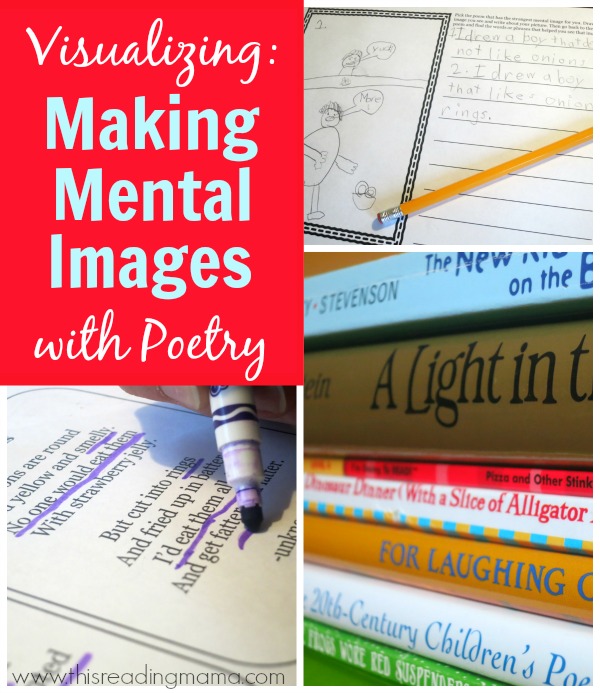
*This post contains affiliate links.
One Way to Introduce Visualizing
While we have talked about and done some visualizing with our Poetry Packs, I wanted to drive the point home with the boys. I started with a visualizing activity that I always used as an introduction with the students I tutored in reading. {This activity can be found in our free pack at the END of this post.}
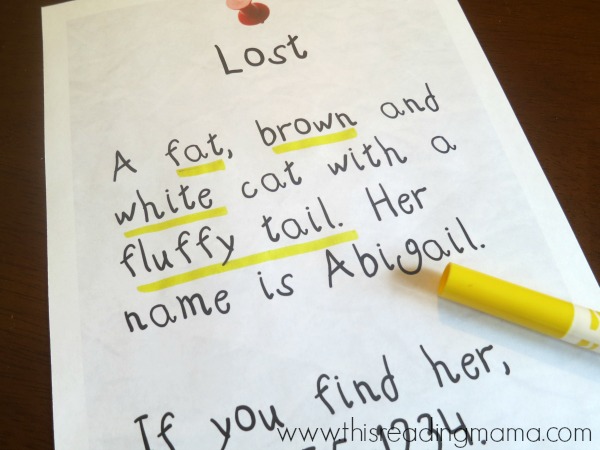
Me: “Suppose you see a ‘lost cat’ sign and read it.” I read it with the boys. “Now, if you saw a cat walking down our street, how would you know if it was the lost cat or another cat?”
Boys: “Well, if it looked like the lost cat, I would know that it was it. If the cat was a different color or really skinny, I’d know it wasn’t the lost cat.”
Me: “Oh, so what you’re telling me is that you have a picture of the lost cat in your head. And if you saw a cat walking down our road, you’d compare that cat with the picture of the cat in your head, right?” Both boys nodded.
“Suppose we went back to the text here and underlined the words and/or phrases that helped us visualize the lost cat. Let’s do that together.” Together, they helped me figure out which words I needed to underline.
My 3rd grader was quick to say, “Many of those words are adjectives. They describe!” Why, yes they are!
And This is What Readers Do…
Me: “When readers read, they visualize, or see pictures in their head, just like you did with the lost cat. Visualizing helps readers not only remember what they’ve read, but it can make reading more interesting, too.”
Visualizing: Making Mental Images with Poetry
Before letting them give it a go, I modeled one more time with a piece of poetry by Shel Silverstein called Breakfast in Bed. I read it, modeled my visualizations, then returned to the text and underline the words and/or phrases that helped me see the picture in my head.
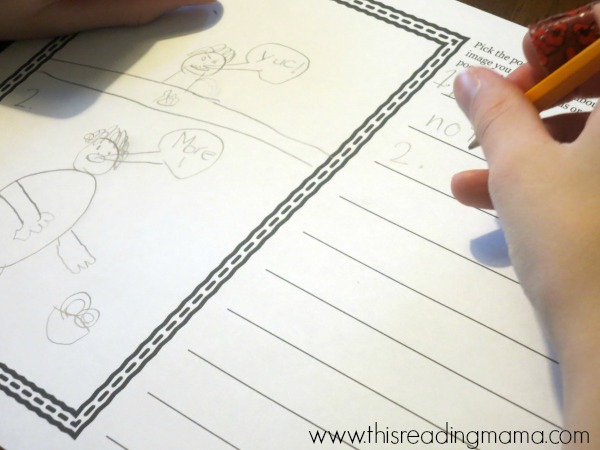
Afterwards, I handed the boys a page with 3-4 poems that had been re-typed from poetry books we own. Just to clarify, the boys had completely different poems, based on their reading abilities; but if you have students on the same reading level, the same poems would we great to use. Their assignment was to read each poem at least once, then pick the one poem that gave them the strongest mental image(s).
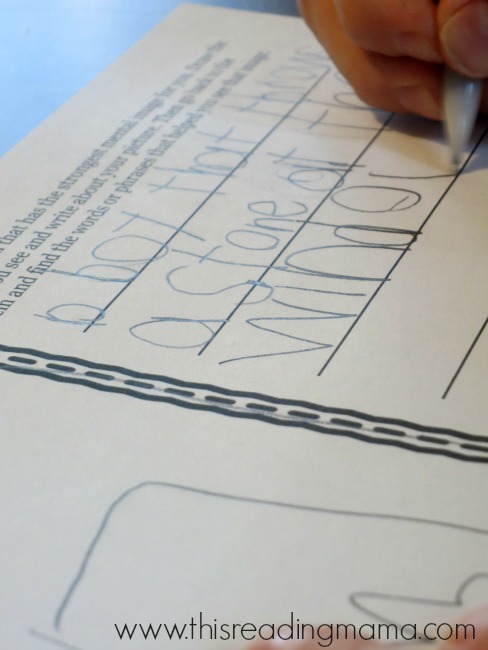
Then they were to write about their mental image on the lines provided.
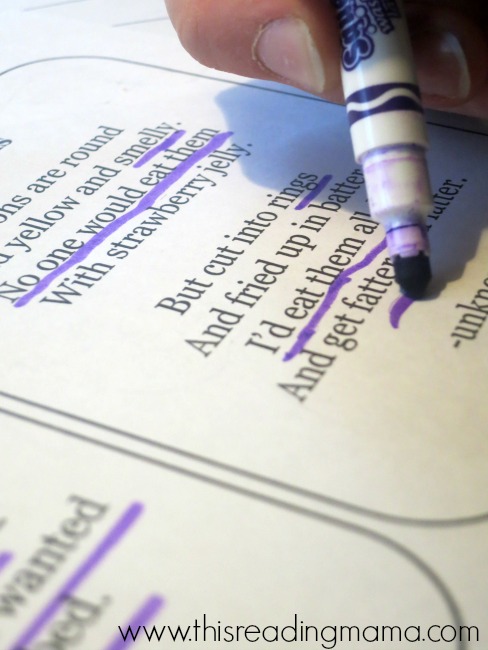
The last part of their “assignment” was to return to the text and underline the words and/or phrases that helped them make their mental image. This is the trickiest part of the assignment, so I provided support when needed. {Some readers will often want to underline every word of the text, so modeling this over and over is important.}

My 3rd grader did better with this part than I anticipated, but my Kindergartner struggled. So, I approached it in a different manner with him. I returned back to his drawing and writing and asked,
Me: “Why did you draw a stone in your picture? How did you know you were supposed to draw a stone?”
My Kindergartner: “Because the poem said there was a stone.”
Me: “Where?”
Son: Re-reads. Right there.
Me: “So, let’s underline stone.”
I continued in this manner, asking him, “Why did you draw a window?” and, “Why did you draw the window breaking?” This helped him find exactly what he needed to underline from the text.
I have to admit that teaching visualizing is probably one of my favorite strategies to teach! I also love to get into figurative language and the five senses, too, but there’s not enough time to share about all that here. Maybe one day when I write a book on comprehension. 😉
More Comprehension & Visualizing Helps:
- Books & Poetry for Making Mental Images
- Visualizing with Instrumental Music
- Books that Model and Teach Figurative Language
- Reading Comprehension: Reading Equals Thinking
>>Download this FREE Visualizing Pack HERE.<<
See all the posts in this 10-week series.
~Becky
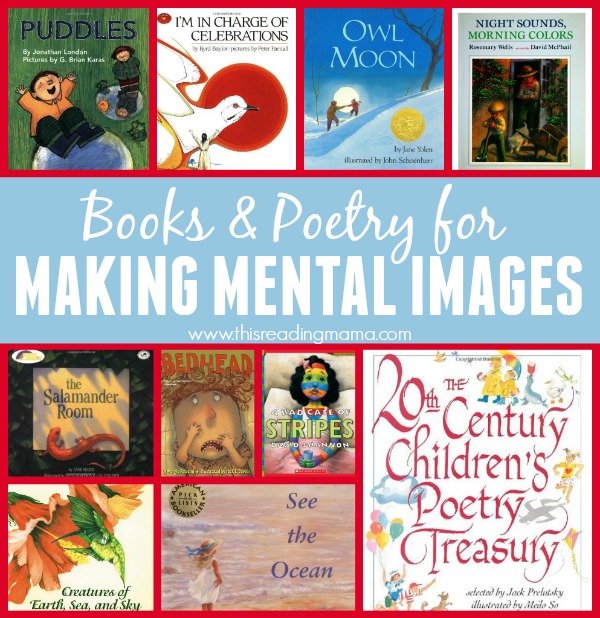
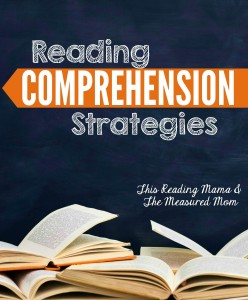
[…] topic of interest, dogs or cats perhaps. Choose funny poems. Choose poems whose language creates vivid images in your mind. Choose your favorites and share […]